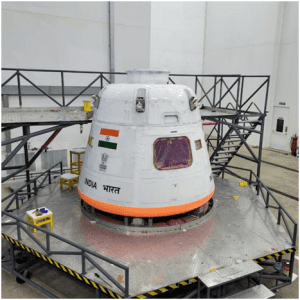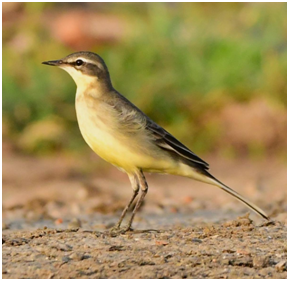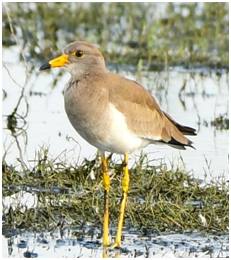1. THE HIGH COST OF CHEAP WATER REPORT
TAG: GS 3: ECOLOGY AND ENVIRONMENT
THE CONTEXT: The report, titled “The High Cost of Cheap Water” was released on the occasion of World Food Day October 16 by the World Wide Fund for Nature (WWF).
EXPLANATION:
- The world has lost a third of its remaining wetlands since 1970, while freshwater wildlife populations have, on average, dropped by 83 per cent.
- This has contributed to growing numbers of people facing water shortages and food insecurity, with rivers and lakes drying up, increasing pollution and food sources such as freshwater fisheries dwindling.
HIGHLIGHTS OF THE REPORT:
- The Global water crisis has threatened $58 trillion in economic value, food security and sustainability.
- The report elaborated that the amount — $58 trillion — is the first ever annual estimate of economic value of water and freshwater ecosystems.
- It is equivalent to 60 per cent of global gross domestic product.
- Water and freshwater ecosystems offer several direct and indirect benefits.
- Direct economic benefits, such as water consumption for households, irrigated agriculture and industries, amount to a minimum of $7.5 trillion annually.
- Purifying water, enhancing soil health, storing carbon, and protecting communities from extreme floods and droughts are seven times higher at around $50 trillion annually.
- The document gave the example of Europe’s Danube basin.
- Eighty per cent of the floodplains along the Danube and tributaries — essential for flood and drought risk mitigation, groundwater recharge and water filtration — have been lost.
- Today, a mere 16 per cent of the rivers in the Danube basin retain their natural or near-natural state and less than 20 per cent are near-natural to slightly altered.
- The Danube is the second longest river of Europe, after the Volga.
ANTHROPOGENIC REASONS:
- The report noted that unsustainable agricultural practices were among the primary threats to rivers and floodplains.
- Agriculture currently accounts for over 70 per cent of the freshwater used by humanity, according to data from the World Bank.
- Over-extraction of water for crop irrigation also reduces its availability for other uses, such as natural flows that support fisheries.
- Agricultural fields now occupy floodplains. This has reduced the purification, flood and drought risk capacities of river systems.
- Excessive fertiliser use creates diffuse pollution affecting surface and groundwater.
- Threats to river systems are threats to food security.
- Our current food production practices are not only harming freshwater ecosystems but are also identified as the primary contributors to biodiversity loss and climate change.
- They are causing land erosion and reducing the capacity of landscapes to deal with water scarcity and droughts.
WAY FORWARD:
- Only by protecting and restoring rivers and their active and former floodplains, keeping water in the landscape with natural water retention measures can we hope to maintain the productivity of agricultural systems into the future.
- Countries must support nature-positive food production and maintain free-flowing rivers for agricultural productivity.
- The world must also apply sustainable land use practices to facilitate natural water retention and adopt diets that reduce demand for products that strain freshwater.
- Food industry can drive a positive change by embracing leading sustainability practices.
2. FLIGHT TEST VEHICLE ABORT MISSION-1 (TV-D1)
TAG: GS 3: SCIENCE AND TECHNOLOGY
THE CONTEXT: Indian Space Research Organisation (ISRO) is about to commence unmanned flight tests for the Gaganyaan mission’s Flight Test Vehicle Abort Mission-1 (TV-D1), in Sriharikota.
EXPLANATION:
- TV-D1 will demonstrate the performance of the Crew Escape System.
- The Department of Space presented a comprehensive overview of the Gaganyaan Mission, including various technologies developed so far such as human-rated launch vehicles and system qualification.
- Around 20 major tests, including 3 uncrewed missions of the Human Rated Launch Vehicle (HLVM3) are planned.
- First demonstration flight of the Crew Escape System Test Vehicle is scheduled on 21 October.
- The meeting evaluated the mission’s readiness, affirming its launch in 2025.

CREW MODULE (CM):
- Crew Module (CM) is where the astronauts are contained in a pressurized earth like atmospheric condition during the Gaganyaan mission.
- The CM for the Gaganyaan mission is in different stages of development.
- For the Test Vehicle Abort mission-1 (TV-D1), the CM is an unpressurised version that has completed its integration and testing and is ready to be shipped to the launch complex.
- This unpressurised CM version has to have an overall size and mass of actual Gaganyaan CM.
- It houses all the systems for the deceleration and recovery.
- With its complete set of parachutes, recovery aids actuation systems and pyros.
- The avionics systems in CM are in a dual redundant mode configuration for navigation, sequencing, telemetry, instrumentation and power.
- The CM in this mission is extensively instrumented to capture the flight data for evaluation of the performance of various systems.
- The Crew Module will be recovered after touchdown in the Bay of Bengal, using a dedicated vessel and diving team from the Indian Navy.
TEST VEHICLE (TV-D1):
- The first development flight Test Vehicle (TV-D1) is in the final stages of preparation.
- The Test Vehicle is a single-stage liquid rocket developed for this abort mission.
- The payloads consist of the Crew Module (CM) and Crew Escape Systems (CES) with their fast-acting solid motors, along with CM fairing (CMF) and Interface Adapters.
- This flight will simulate the abort condition during the ascent trajectory corresponding to a Mach number of 1.2 encountered in the Gaganyaan mission.
- CES with CM will be separated from the Test Vehicle at an altitude of about 17 km.
- Subsequently, the abort sequence will be executed autonomously commencing with the separation of CES and deployment of the series of parachutes, finally culminating in the safe touchdown of CM in the sea, about 10 km from the coast of Sriharikota.
3. FAST RADIO BURSTS (FRBS)
TAG: GS 3: SCIENCE AND TECHNOLOGY
THE CONTEXT: A recent study by the astronomers from the University of Tokyo has bolstered support for a starquake source for fast radio bursts (FRBs).
EXPLANATION:
- The study was published in the journal Monthly Notices of the Royal Astronomical Society.
- It found that the patterns of FRBs resemble those of earthquakes on Earth.
- Findings suggest that FRBs are caused by a localized event, such as a starquake.
- Starquakes are thought to occur when the crust of a neutron star ruptures due to the intense gravitational forces inside the star.

An illustration of a neutron star undergoing a “starquake,” a violent event that could cause mysterious fast radio bursts.
FAST RADIO BURSTS:
- A fast radio burst is a bright and brief burst of electromagnetic radiation (light) seen in radio-wave frequencies.
- They usually last for very short period of time.
- Some FRBs repeat, but the vast majority happen once and disappear forever.
- They reach earth from faraway galaxies, emitting as much energy in a millisecond as the sun does over weeks.
- Scientists don’t know for sure what causes fast radio bursts.
- However, the current prevailing theory is that at least some FRBs are emitted by neutron stars.
- These stars form when a supergiant star collapses, going from eight times the mass of our sun (on average) to a superdense core only 20–40 kilometers across.
- Magnetars are neutron stars with extremely strong magnetic fields, and these have been observed to emit FRBs.
SOURCE: https://www.wionews.com/science/fast-radio-bursts-in-space-occur-due-to-starquakes-study-647154
4. TILAPIA PARVOVIRUS (TIPV)
TAG: GS 3: ECOLOGY AND ENVIRONMENT
THE CONTEXT: The occurrence of tilapia parvovirus (TiPV) has been reported for the first time in India at ponds in Walajah in Ranipet district of Tamil Nadu.
EXPLANATION:
- Fish samples were collected from 10 ponds in the farm and fish from eight ponds showed TiPV-positive by PCR.
- This DNA virus caused mortality ranging from 30 to 50% in the farm and 100% mortality in the laboratory.
TILAPIA:
- Tilapia is a common name used for certain species of fishes belonging to the family Cich lidae (order Perciformes).
- These are freshwater species native to Africa.
- It is easily raised and harvested food fish.
- Mozambique tilapia was introduced to Indian fresh water bodies in the 1950s and it is called Jilabi in Tamil Nadu.
- Capable of surviving in low-oxygen levels in water, the fish has turned invasive across the country.
- Nile tilapia introduced in the 1970s is a little bigger and is cultured on a large-scale.
- Among the tilapia species, the Indian government had authorized import of only Oreochromis niloticus in 1970 and red hybrids because of their fast growth and market demand.
- In India, tilapia farming is being carried out in different parts of Andhra Pradesh and Kerala, and is sold in domestic markets as whole fish.
- In 2022, the tilapia production was estimated at about 70,000 tonnes, of which 30,000 tonnes come from aquaculture.
- While screening the fish for viral pathogens in the months of February and March 2023, the research team reported the occurrence of Tilapia parvovirus.
TILAPIA PARVOVIRUS (TIPV):
- It is a small, nonenveloped, single-stranded DNA (ssDNA) virus.
- It was first reported in China in 2019 and Thailand in 2021. India is the third country to report the occurrence of TiPV.
- This virus was localized in the gills, heart, brain, liver, pancreas, spleen, intestine, kidney, eyes, and muscles of tilapia.
5. PALLIKARANAI MARSHLAND
TAG: GS 3: ECOLOGY AND ENVIRONMENT
THE CONTEXT: Despite threats of new infrastructure and encroachments, winged visitors continue to arrive at the Pallikaranai marshland, where 196 species including 72 migratory birds have been documented over two decades.
EXPLANATION:
- With over 150 garganeys, and several other species, including waders and raptors, flocking the Pallikaranai marshland, the curtain for the migratory season has been raised.
- Garganey, northern pintail, northern shoveler, common teal, western yellow wagtail, grey-headed lapwing, common sandpiper, and wood sandpiper have arrived.
- Raptors, such as red-necked falcon, osprey, and greater-spotted eagle were also sighted.
- It has been observed that the western yellow wagtail arrives from northern latitudes at the marshland every first week of September.
- The grey-headed lapwing comes between September 28 and October 2.

Common teal

Western yellow wagtail

Grey-headed lapwing
PALLIKARANAI MARSHLAND:
- It is a freshwater marsh and partly saline wetland situated about 20 kilometres south of the city of Chennai, Tamil Nadu.
- On its eastern periphery, the Marsh is flanked by the Buckingham Canal.
- The diverse ecosystem of the marshland supports some 115 bird species, ten mammals, 21 reptiles, ten amphibians, 46 fish, nine molluscs, five crustaceans, and seven butterfly species.
- These include notable species such as Russell’s viper (Daboia siamensis) and birds such as the glossy ibis (Plegadis falcinellus), grey-headed lapwings (Vanellus cinereus) and Pheasant-tailed jacana (Hydrophasianus chirurgus).
- Apart from its biodiversity value, the wetland also plays a vital role in the prevention of flooding for the city of Chennai, soaking up water during wet periods and releasing it during dry spells.
- The site is threatened by invasive and non-native species, household sewage, urban wastewater and droughts.
- It is one of the Ramsar sites from India.

